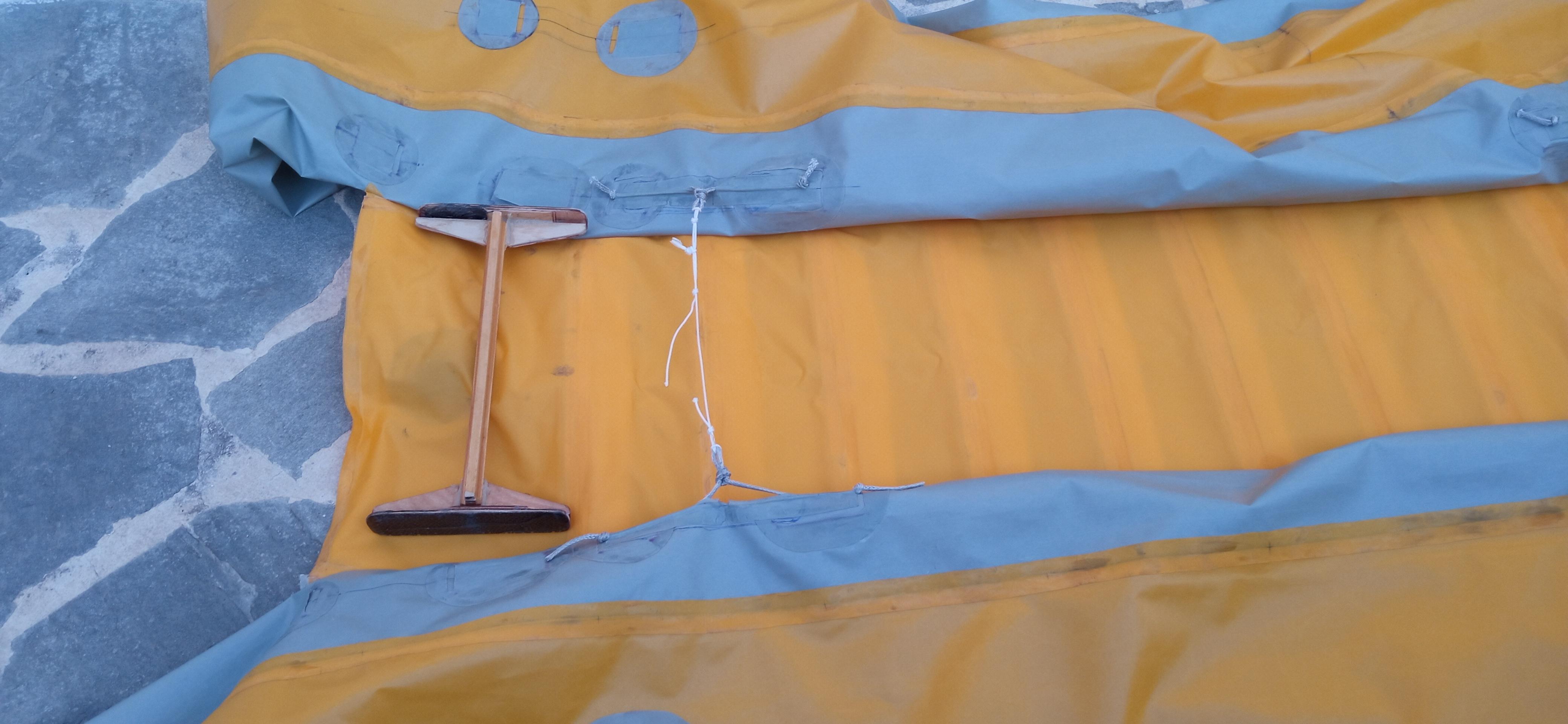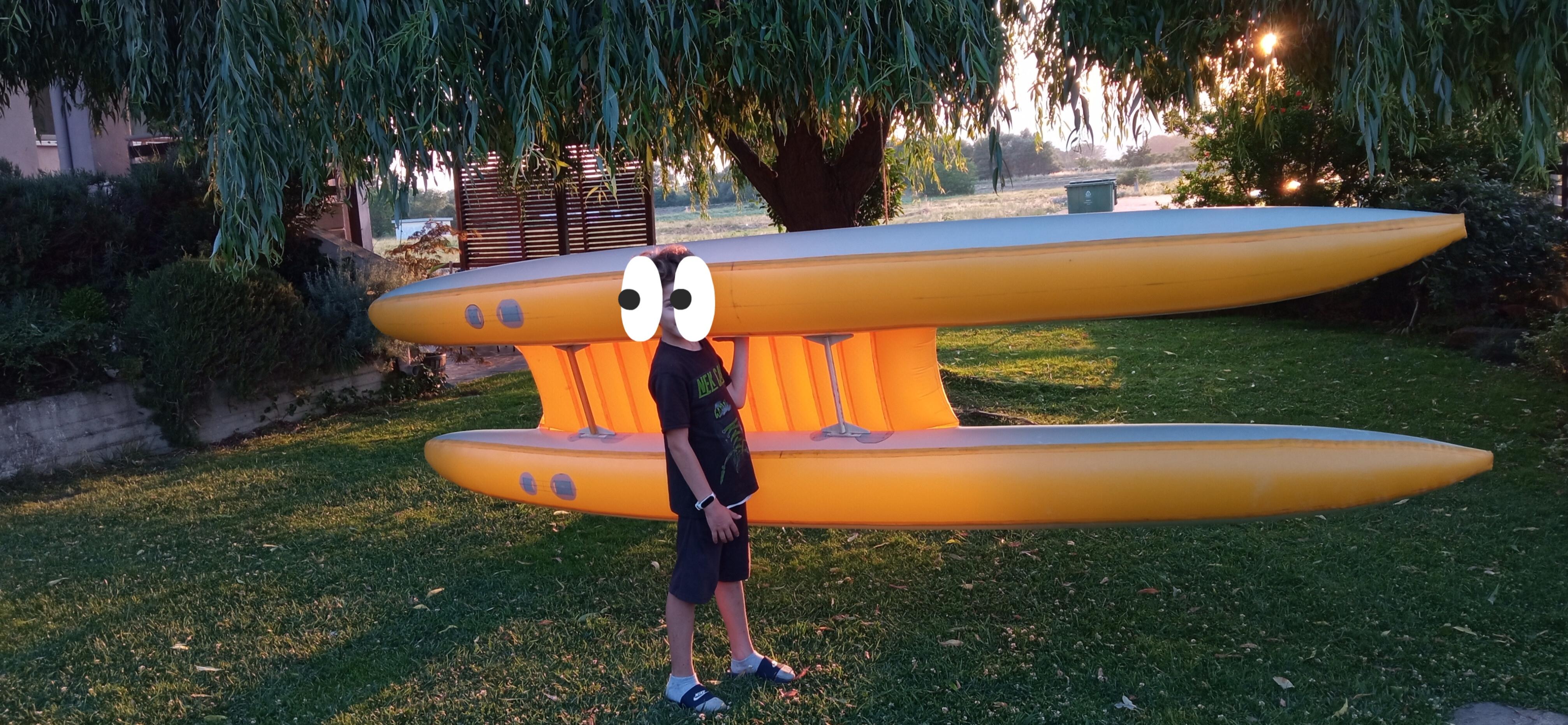- This topic has 5 replies, 3 voices, and was last updated 1 year, 8 months ago by .
-
Topic
-
Hi,
Inspired by Tim’s catyak http://www.cubenmaker.com/?2
I wanted to make an easier to assemble catyak, with minimal rigid frame. I knew I will face difficulties and failures but hoped to find solutions. So after a lot of thinking and welding , I made it . Unfortunately as you can see at picture, the fabric sockets holding the crossbars preventing pontoons to roll, and also the welded dyneema rope , to prevent outward forces, ripped off 🙁 I used 210d 275gr/ SQM tpu nylon from extemetextile, I am located in Greece, for the whole project. My question if anybody have experience is, if I make the sockets and welded dyneema rope, by heavier tpu nylon, 450gr/ sqm ( extemetextile doesn’t have any heavier, if anyone in Europe knows any other source bof heavier tpu nylon, please write it), would the heavier fabric withstand forces applied and won’t rip off? Thanks in advance


- You must be logged in to reply to this topic.